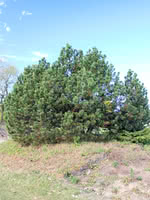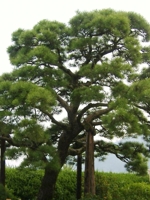Mon-Fri 9am - 5pm Mountain time
Mugo Pine vs Japanese Black Pine
Pinus mugo
Pinus thunbergii
NOT AVAILABLE THIS SEASON - MIGHT RETURN
The Mugo Pine is a smaller evergreen that is commonly seen in small city lots or up against houses or commercial buildings. Its slow growth allows for a long life without ever getting too large.
It is a very attractive tree that seldom gets the attention it deserves outside of professional landscapers. Mugo Pine is an extremely hardy, adaptable evergreen.
Japanese Black Pine is known for its unique and irregular growth habit, making it a striking landscape addition. It typically does not grow with a central leader. This causes it to form a flat-top, classic bonsai-like shape when mature. When it has a central leader, it will grow with a twisted trunk. Another striking feature is the white apical buds which contrast with the surrounding green needles.
The Japanese Black Pine is an excellent candidate for a bonsai tree and is frequently used by the bonsai community. It is found along the Japanese coast and is salt tolerant.

